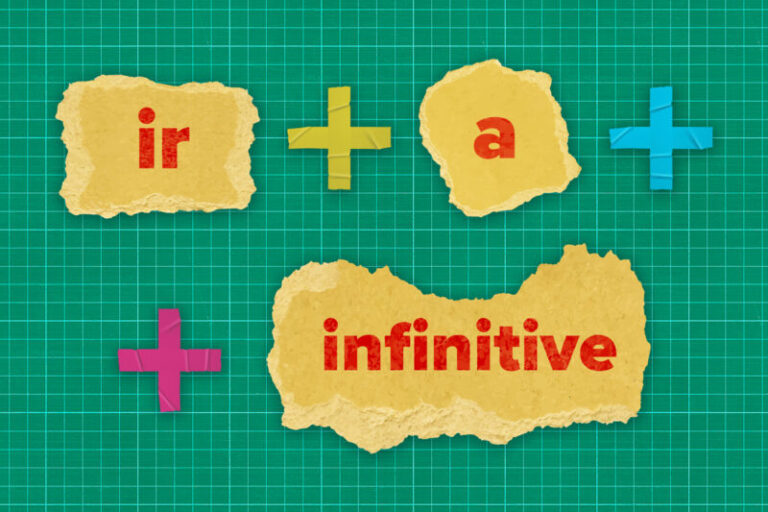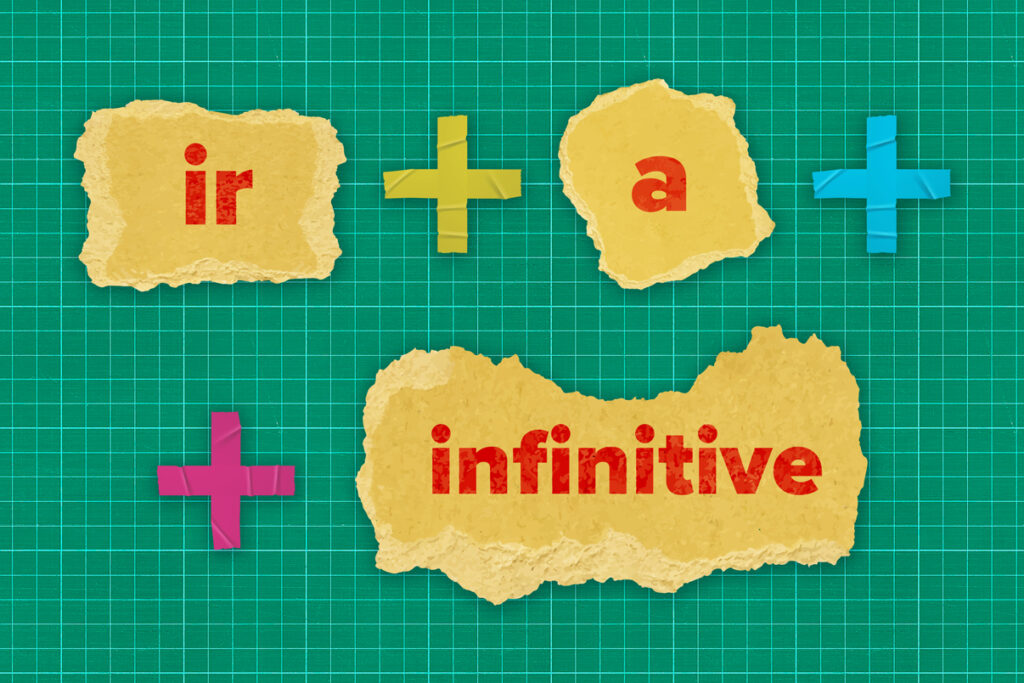
The Spanish verb ir (to go) can be used to talk about moving through space and time into the immediate future.
This post assumes you already have some knowledge of the Spanish present tense and other basic vocabulary.
The formula ir + a + infinitive is used to express the near future in Spanish. Ir is the verb meaning “to go”, and the infinitive is a verb that has not been conjugated. Put together, it could look something like this: Voy a comer (I’m going to eat).
Today, we’ll learn all about the ir + a + infinitive structure, how and when to use it to talk about the near future and what makes it different from the simple future tense.
Contents
Download:
This blog post is available as a convenient and portable PDF that you
can take anywhere.
Click here to get a copy. (Download)
Ir + A + Infinitive: The Near Future Tense
Ir + a + infinitive is a handy formula you can use to talk about the near future in Spanish. It can be translated as “going to [verb].”
This makes it an easy alternative to using the Spanish simple future tense, which requires special verb conjugations. Take these two sentences for example:
Voy a nadar mañana.
— I’m going to swim tomorrow.
Nadaré mañana.
— I will swim tomorrow.
They mean the same thing, but are said in different ways.
However, one difference is that ir + a + infinitive can only be used to talk about actions that will happen in the near future. If you want to talk about things that will occur in the distant future, you’ll need to use the simple future tense.
How to Use the Ir + A + Infinitive Formula
Before you learn how to use ir + a +infinitive, you need to know how to conjugate the verb ir (to go) in the present tense.
So, what are the conjugations of ir?
| Pronoun | Conjugation |
|---|---|
| Yo | Voy |
| Tú | Vas |
| Él/Ella/Usted | Va |
| Nosotros | Vamos |
| Vosotros | Vais |
| Ellos/Ellas/Ustedes | Van |
To use the formula, follow these three simple steps:
1. Conjugate ir into the correct present tense
2. Insert the preposition a (to)
3. Attach the infinitive form of the verb at the end
Infinitives are the unconjugated “base forms” of Spanish verbs in dictionaries that end in -ar, -er or -ir, for example estudiar (to study), comer (to eat) or escribir (to write).
Examples of Ir + A + Infinitive
When we plug the above steps into the ir + a + infinitive formula, we can create sentences like these:
Vamos a estudiar.
— We’re going to study.
Voy a comer.
— I’m going to eat.
¿Vas a escribir?
— Are you going to write?
Of course, we can also use this construction in sentences more than three words long.
While word order in Spanish is notoriously flexible, ir + a + infinitive is a tightly bound trio that must never be separated.
Any additional words will come before or after, but never anywhere inside. For example:
Ellos van a bailar tango.
— They’re going to dance tango.
Voy a vivir en Nápoles.
— I’m going to live in Naples.
¿Vas a tomar la siesta?
— Are you going to take a nap?
The same applies to object pronouns (e.g., lo, la, te, nos, etc.). They must never come anywhere inside our inviolable trio but rather be right before, after or attached to the infinitive. For example:
Vamos a hacerlo.
— We’re going to do it.
Lo vamos a hacer.
— We’re going to do it.
When to Use Ir + A + Infinitive
You can use the simple ir + a + infinitive formula in these situations:
- When you’re talking about actions of the near future
- When you’d normally say “going to” in English
- When expressing immediacy or urgency
- When making plans or setting intentions
Ir + A + Infinitive (Near Future) vs. the Simple Future Tense
The near future is a very subjective thing.
It could be in five minutes or one week.
In either case, as we mentioned earlier in the post, ir + a + infinitive implies more immediacy than the Spanish simple future tense.
The simple future tense, in contrast, sounds like it takes place in the distant future and is also a bit more formal.
Take these two sentences for example.
First, the ir + a + infinitive version:
Voy a hacer lo necesario.
— I’m going to do what is necessary. (i.e. soon, I’ll get it done now-ish, I’ll take care of it)
Compare that to the simple future version:
Haré lo necesario.
— I will do what is necessary. (i.e., it will happen in the future, sometime)
The first sentence is more reassuring to the listener who’s anxious to see something done. The second sentence would leave someone less sure how soon action will be taken.
You can see an example of this contrast in the following reggaeton song.
In the first few lines, the gentleman who’s serenading us says:
Hoy voy a beber y sé
que voy a enloquecer
y te llamaré después
para hacerte mía mujer
Today I’m going to drink and I know
that I’m going to lose my mind
and I will call you after
to make you my wife
You can read the full lyrics here.
The first two lines use the construction ir + a + infinitive, which tells us that our lovelorn crooner is about to hit the bottle.
A bit more distantly, after the crazy drunken haze of the night, the lucky lady can expect a ring—or at least some slurred speech from a man down on one knee.
Spanish media (like songs) are full of the ir + a + infinitive formula. I highly recommend you explore others, whether it be on YouTube, Netflix, social media or an online language learning program like FluentU.
Now that you know how to use ir + a + infinitive, I challenge you to find an online language partner tonight, talk about your immediate plans and then ask about theirs.
¡Va a ser fantástico! (It’s going to be fantastic!)
Download:
This blog post is available as a convenient and portable PDF that you
can take anywhere.
Click here to get a copy. (Download)
And One More Thing…
If you’ve made it this far that means you probably enjoy learning Spanish with engaging material and will then love FluentU.
Other sites use scripted content. FluentU uses a natural approach that helps you ease into the Spanish language and culture over time. You’ll learn Spanish as it’s actually spoken by real people.
FluentU has a wide variety of videos, as you can see here:
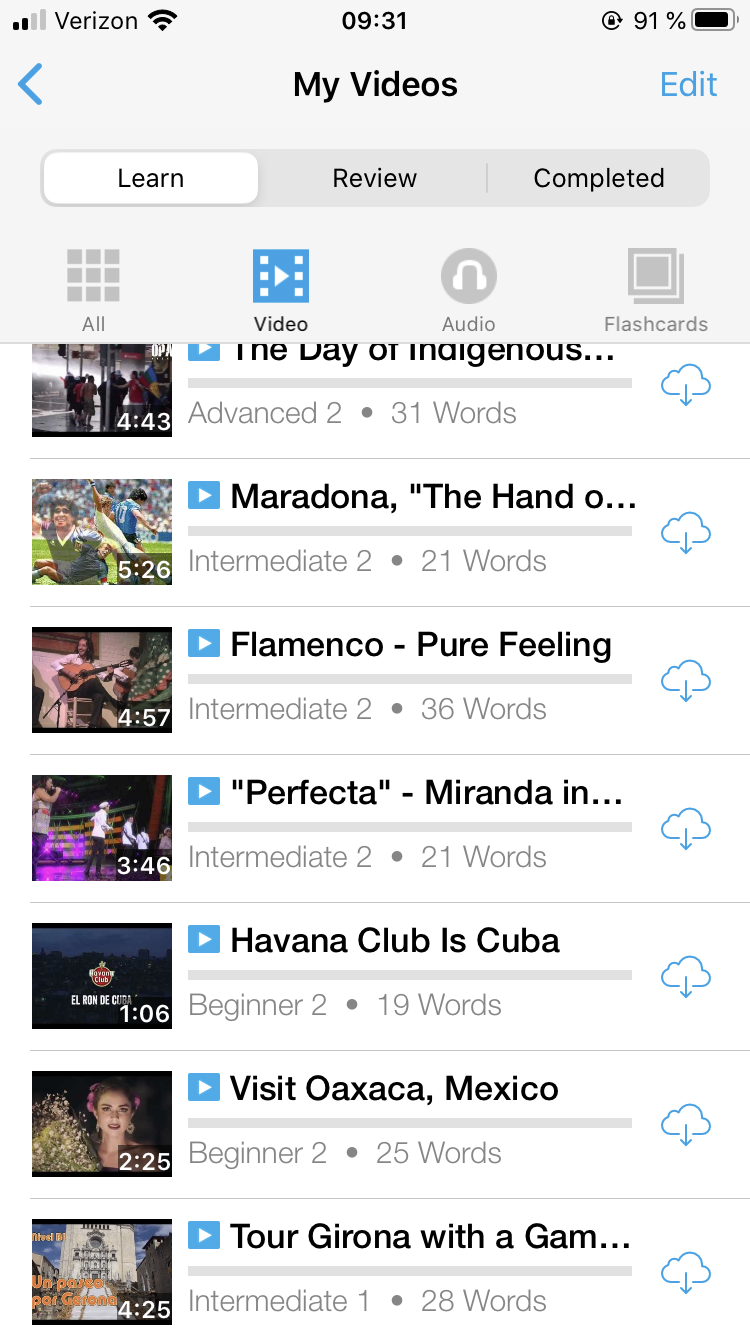
FluentU brings native videos within reach with interactive transcripts. You can tap on any word to look it up instantly. Every definition has examples that have been written to help you understand how the word is used. If you see an interesting word you don’t know, you can add it to a vocab list.
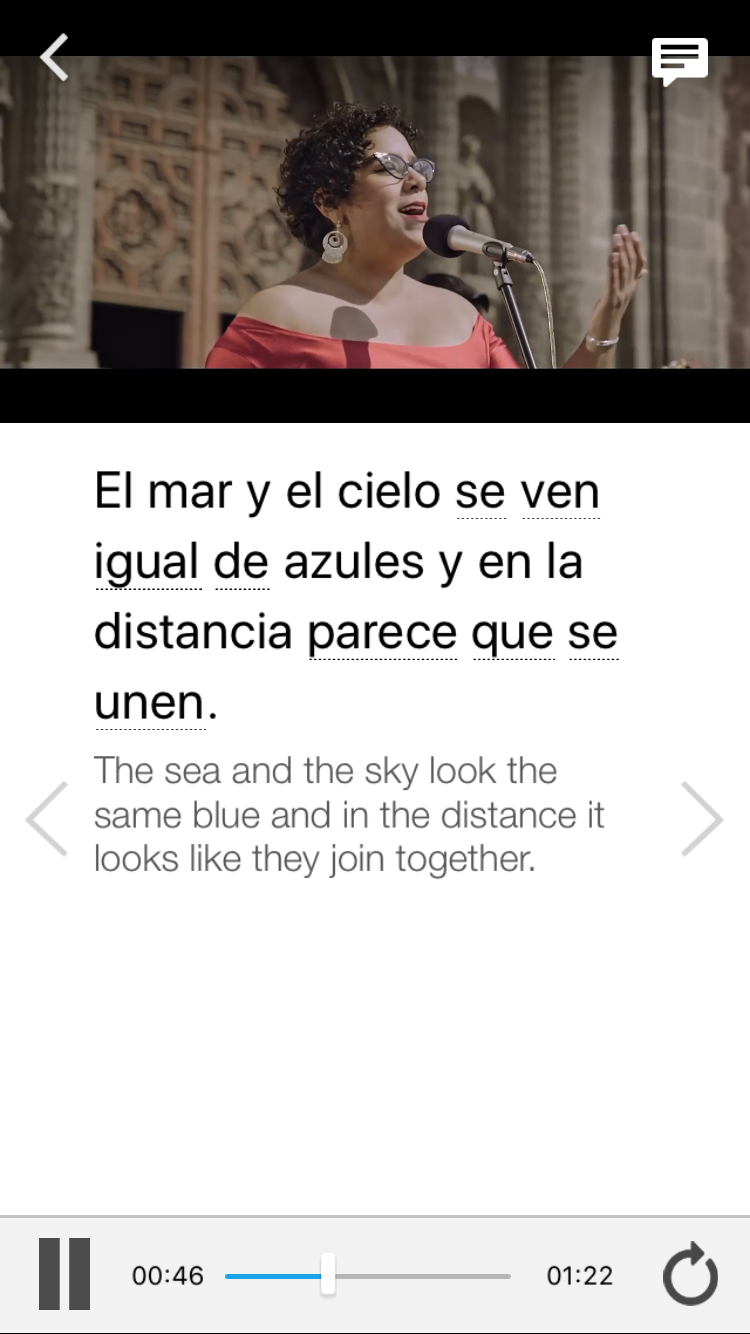
Review a complete interactive transcript under the Dialogue tab, and find words and phrases listed under Vocab.
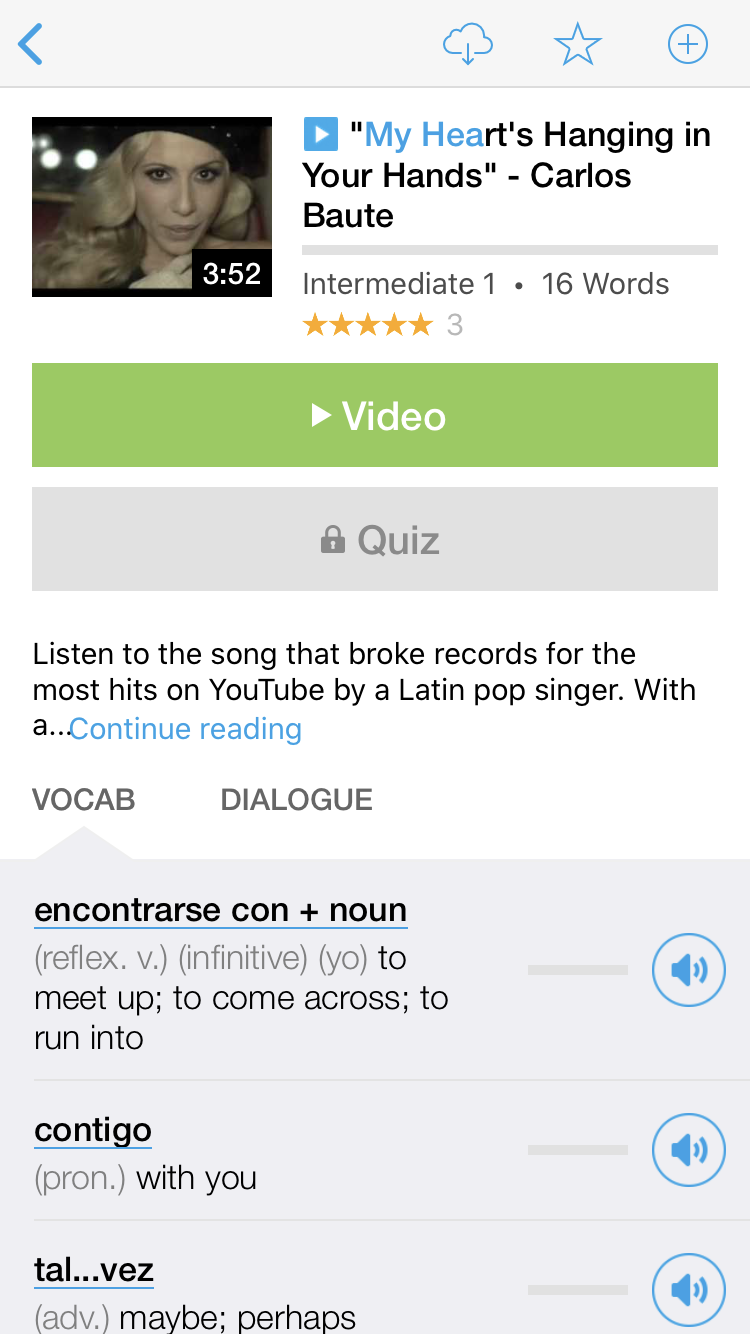
Learn all the vocabulary in any video with FluentU’s robust learning engine. Swipe left or right to see more examples of the word you’re on.
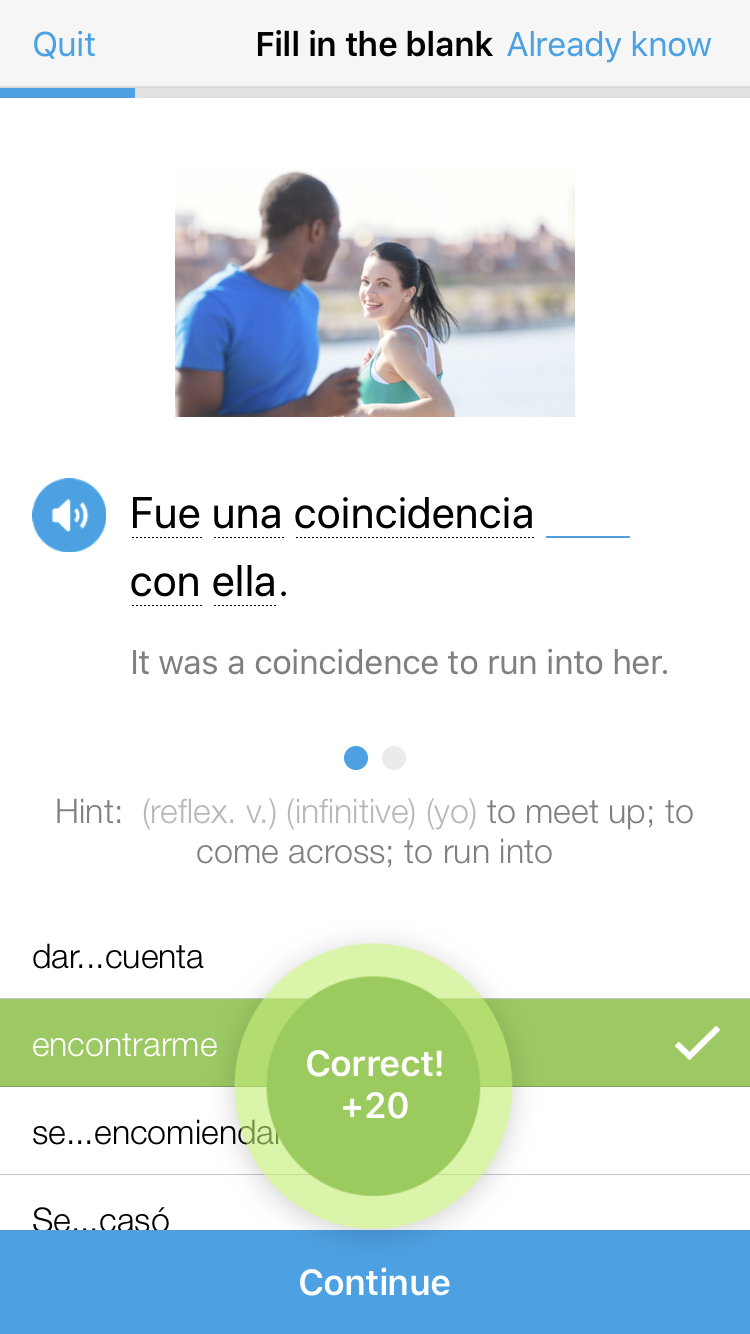
The best part is that FluentU keeps track of the vocabulary that you’re learning, and gives you extra practice with difficult words. It’ll even remind you when it’s time to review what you’ve learned. Every learner has a truly personalized experience, even if they’re learning with the same video.
Start using the FluentU website on your computer or tablet or, better yet, download the FluentU app from the iTunes or Google Play store. Click here to take advantage of our current sale! (Expires at the end of this month.)


